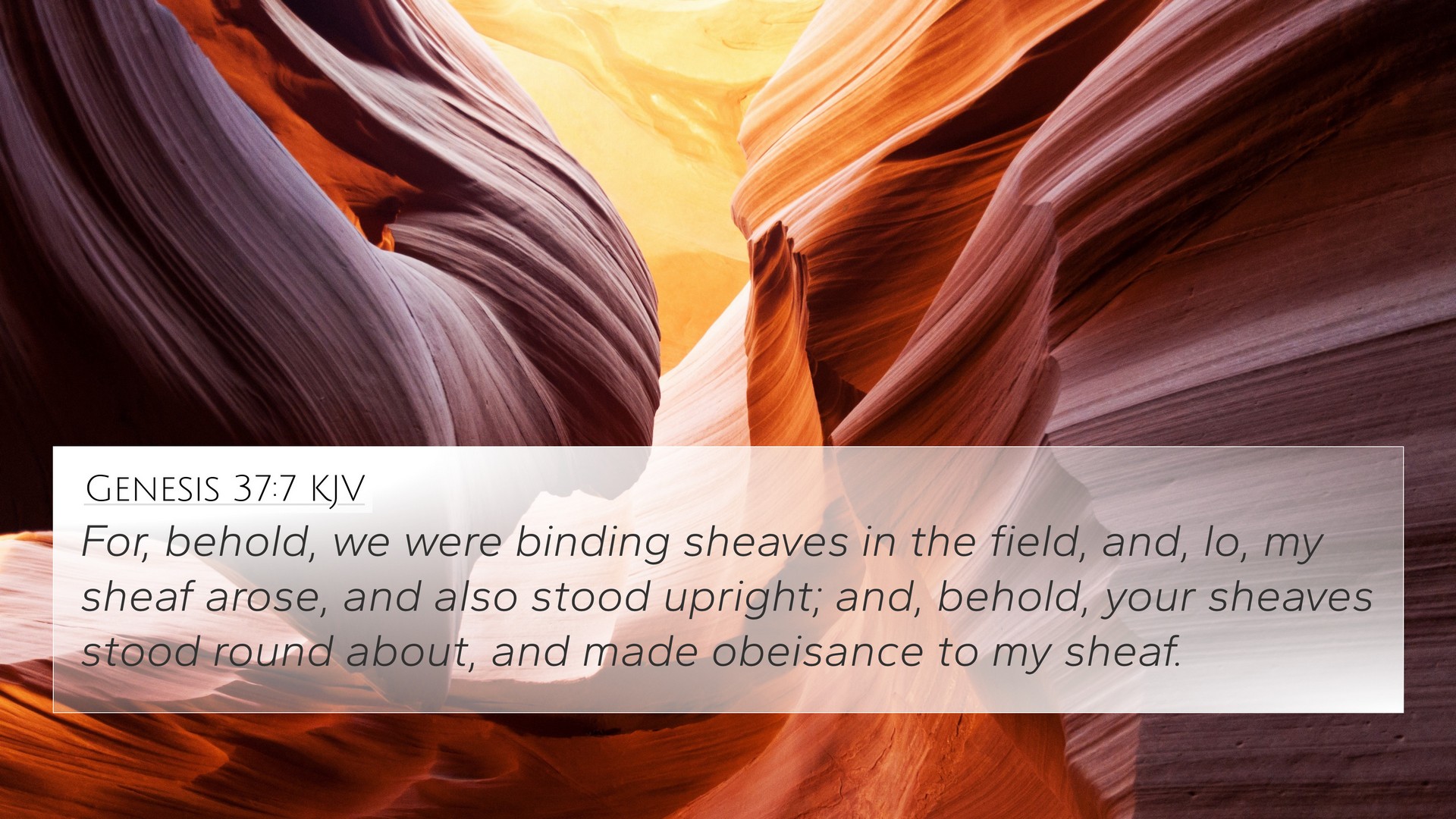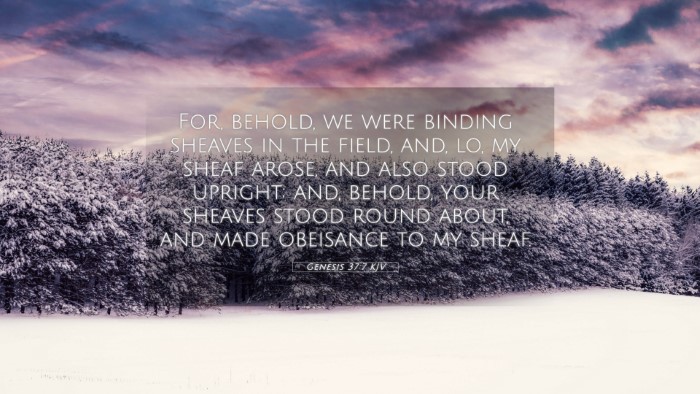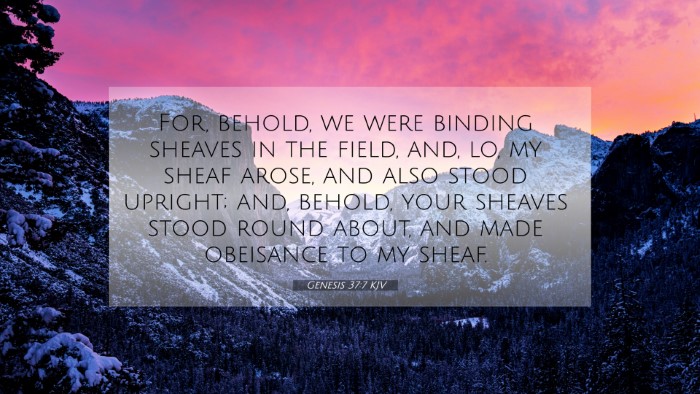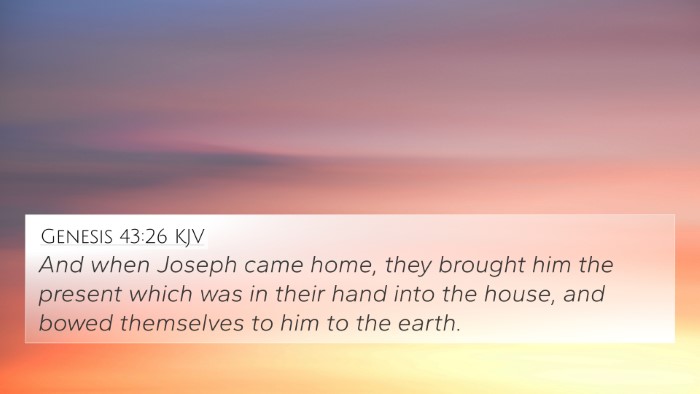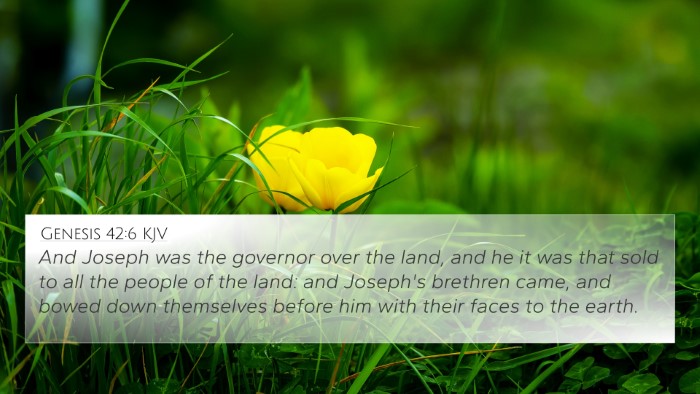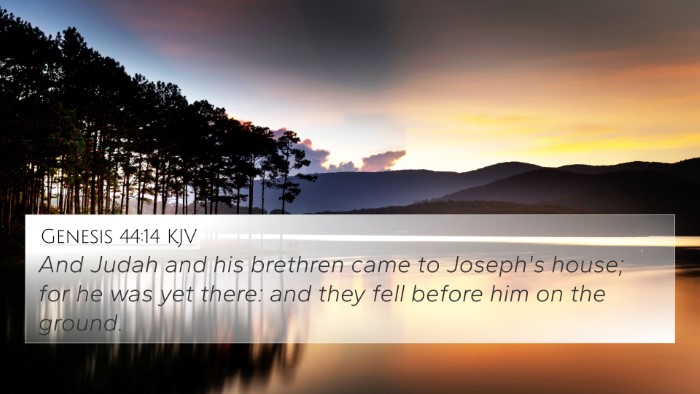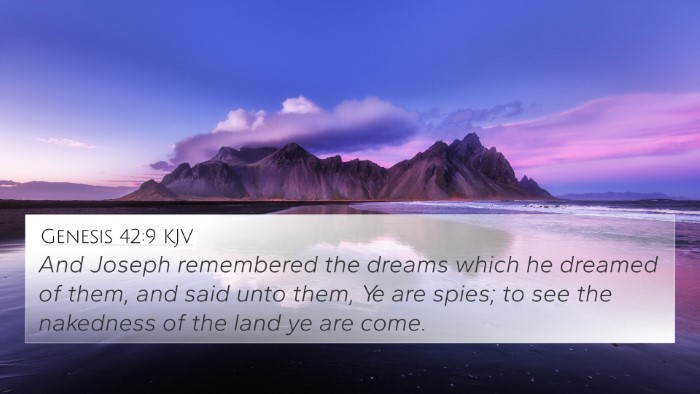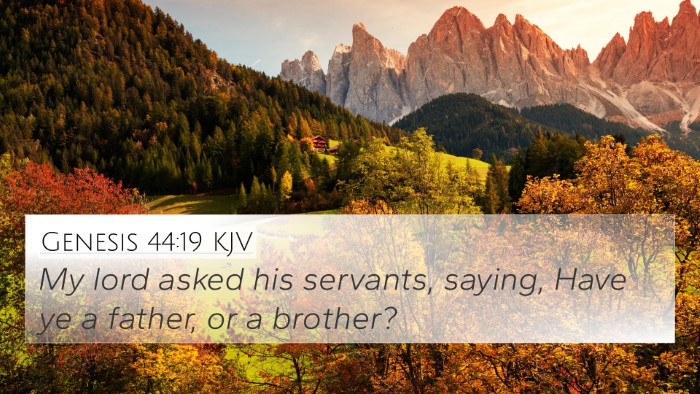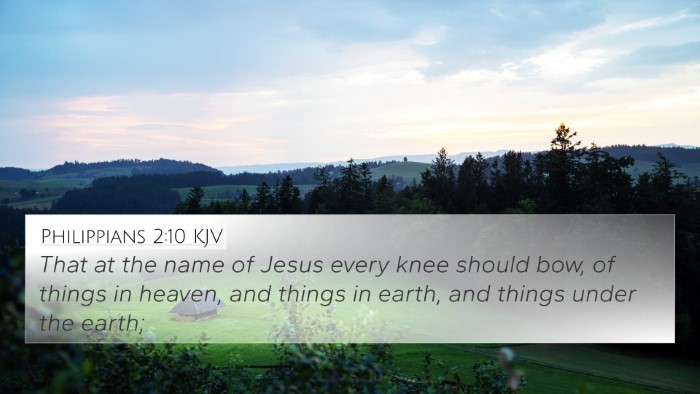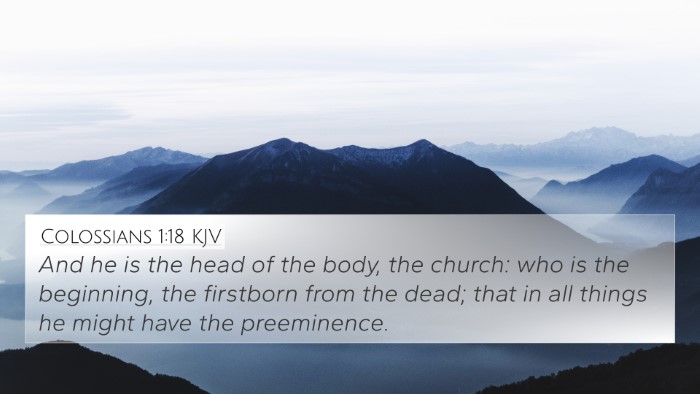Understanding Genesis 37:7
Genesis 37:7 states, "For behold, we were binding sheaves in the field, and behold, my sheaf arose and also stood upright. And behold, your sheaves gathered around it and bowed down to my sheaf." This verse illustrates Joseph's dream, which depicts his future prominence and the eventual subjection of his brothers to him. It holds both literal and symbolic significance in the narrative of Joseph's life.
Interpretation and Meaning
The interpretations from esteemed public domain commentaries such as those by Matthew Henry, Albert Barnes, and Adam Clarke help us explore deeper meanings within this verse.
Matthew Henry's Commentary
Henry emphasizes that this dream signifies Joseph's future elevation above his brothers. The binding of sheaves represents the labor and toil of life, while the sheafs bowing symbolize the eventual submission of his family to him. Henry also comments on the providence of God, suggesting that these events are part of a divine plan aimed at saving the family during a time of famine.
Albert Barnes' Commentary
Barnes highlights the dream's prophetic nature, illustrating the order that God often establishes among families. He points out the significance of dreams in Joseph's life, serving as an early indication of the former familial hierarchy to be reversed. This reversal indicates that even within a seemingly unjust dynamic, God's plan will ultimately prevail and manifest through Joseph's eventual rise to power in Egypt.
Adam Clarke's Commentary
Clarke notes the metaphorical implications of the sheaves, linking them to the tribal structure of Israel. He underscores that the act of bowing down signifies respect and subservience, foreshadowing the future where Joseph would not only save but also lead his family. Clarke also emphasizes the theme of jealousy that arises from Joseph's dream, setting the stage for future conflicts resulting from the brothers' resentment.
Cross-References
This verse connects to several other verses in the Bible, creating a mosaic of inter-Biblical dialogue and thematic connections:
- Genesis 41:30-31 - Highlights Joseph's rise to power and the fulfillment of his dreams.
- Genesis 45:4-8 - Joseph reveals his identity to his brothers, showcasing the fulfillment of the dream.
- Hebrews 11:22 - Discusses the faith of Joseph and his prophetic awareness concerning his bones.
- Matthew 20:16 - Reflects the theme of last being first, resonating with Joseph's eventual rise.
- Philippians 2:10 - Acknowledges the concept of bowing to Christ, drawing parallels with Joseph's sheaves.
- Revelation 3:9 - A promise of the humility of nations and peoples before God's chosen ones.
- Romans 14:11 - Explicitly states “Every knee shall bow,” connecting to the theme of submission.
Thematic Connections
Genesis 37:7 carries themes of leadership, jealousy, divine destiny, and familial dynamics. The verse encourages a comparative Bible verse analysis to explore the connections between Old and New Testament teachings and how these narratives interweave.
Another connection to explore is found in Genesis 49:8-10, where Jacob blesses Judah, indicating a royal lineage, thus illustrating how God's plans unfold through generations, often reversing human expectations.
Tools for Cross-Referencing
For deeper study, utilizing tools such as a Bible concordance or Bible cross-reference guide can be invaluable. These resources facilitate understanding the links between different Biblical texts, enhancing one's study of how themes assist in scriptural interpretations.
Conclusion
Genesis 37:7 teaches profound lessons about dreams, leadership, foresight, and family dynamics. The dual lens of prophetic significance and personal experience invites believers to reflect on how God orchestrates events for His purpose, using tools of cross-referencing Bible verses to deepen understanding. As believers, recognizing the links between scriptures enriches faith and fosters a broader comprehension of Biblical narratives.
